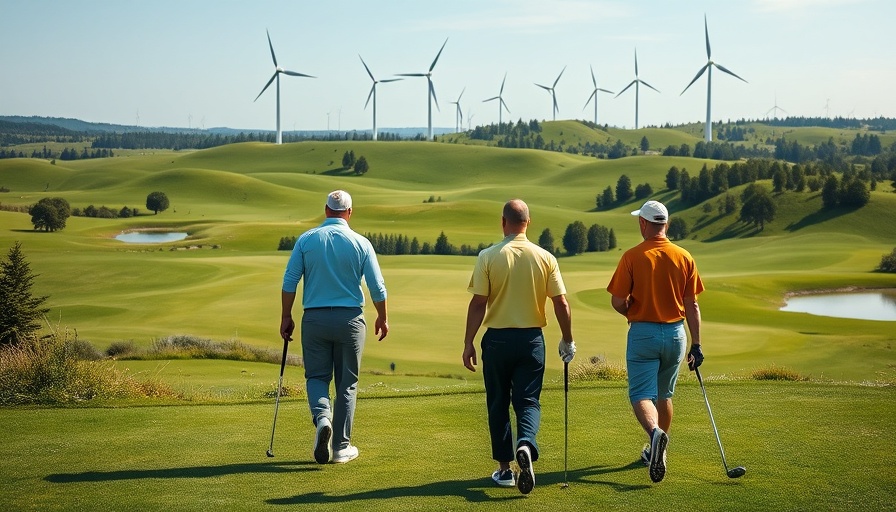
The Growing Concern: Golf Courses Vs. Renewable Energy
A recent study has sparked both debate and concern over land use priorities in countries such as the United Kingdom and the United States. This study reveals that the acres dedicated to golf courses significantly overshadow those allocated for renewable energy projects like solar and wind. In fact, the space occupied by golf courses worldwide could potentially generate over 842 gigawatts (GW) of solar and 659 GW of wind energy. The disparity not only highlights a misallocation of land resources but raises questions about societal values and environmental priorities.
The Environmental Footprint of Land Use
According to the study published in the journal Environmental Research Communications, golf courses require extensive maintenance practices that include chemical treatments and large quantities of water, contributing to their hefty environmental footprint. In contrast, renewable energy facilities like solar farms demand much less land per megawatt produced, making them a sustainable alternative. Solar farms typically require only 0.01 square kilometers of land per megawatt compared to the 0.12 square kilometers needed for wind turbines. This means that the same land currently taken up by golf courses could be repurposed for clean energy installations that would benefit the public more broadly.
Highlighting Potential: The Future of Land Management
One of the lead authors, Dr. Jann Weinand, emphasizes that the study does not advocate for an outright ban on golf courses but rather encourages rethinking how land is utilized to maximize renewable energy. This perspective aligns with the growing movement advocating for energy justice—the idea that the benefits and burdens of land use and energy production should be equitably distributed. By considering how large areas of golf courses can be transformed into productive solar or wind sites, we can unlock immense energy potential that currently remains untapped.
Case Studies: Innovations in Land Use
Looking to the future, innovators have already shown the feasibility of converting golf courses into renewable energy sites. In Japan, a former golf course in Hyogo Prefecture has been transformed into a solar park, generating significant clean energy. Furthermore, a hybrid approach could allow for both golfing and renewable energy on the same site—using wind turbines or solar panels alongside fairways, thereby reducing conflict over land use while retaining recreational access.
Societal Implications: Rethinking Priorities
As the debate continues, it becomes increasingly clear that reallocating land use from exclusive recreational activities like golf to more publicly accessible and beneficial uses like renewable energy could help fight climate change and promote sustainability. It raises a larger question about who benefits from current land use decisions—golf courses primarily serve affluent individuals, while renewable energy installations can provide widespread environmental benefits. The findings from this study urge a change in perspective, pushing for societal benefits over exclusivity.
The Path Forward: Rethinking Our Land Use
With climate change looming large, the urgency to accelerate the transition to renewable energy has never been more critical. This shift requires innovative approaches to land use, prioritizing areas that yield the most benefit to the public and the environment. As nations grapple with land scarcity and competing interests, it is vital to advocate for policies that reflect these changing priorities in an equitable way.
For those interested in the powerful implications of this study, consider advocating for sustainable land management practices in your community. Engage with local leaders about the potential for renewable energy projects on underutilized lands and share this important dialogue with your neighbors.
 Add Row
Add Row  Add
Add 



 Add Row
Add Row  Add
Add 

Write A Comment